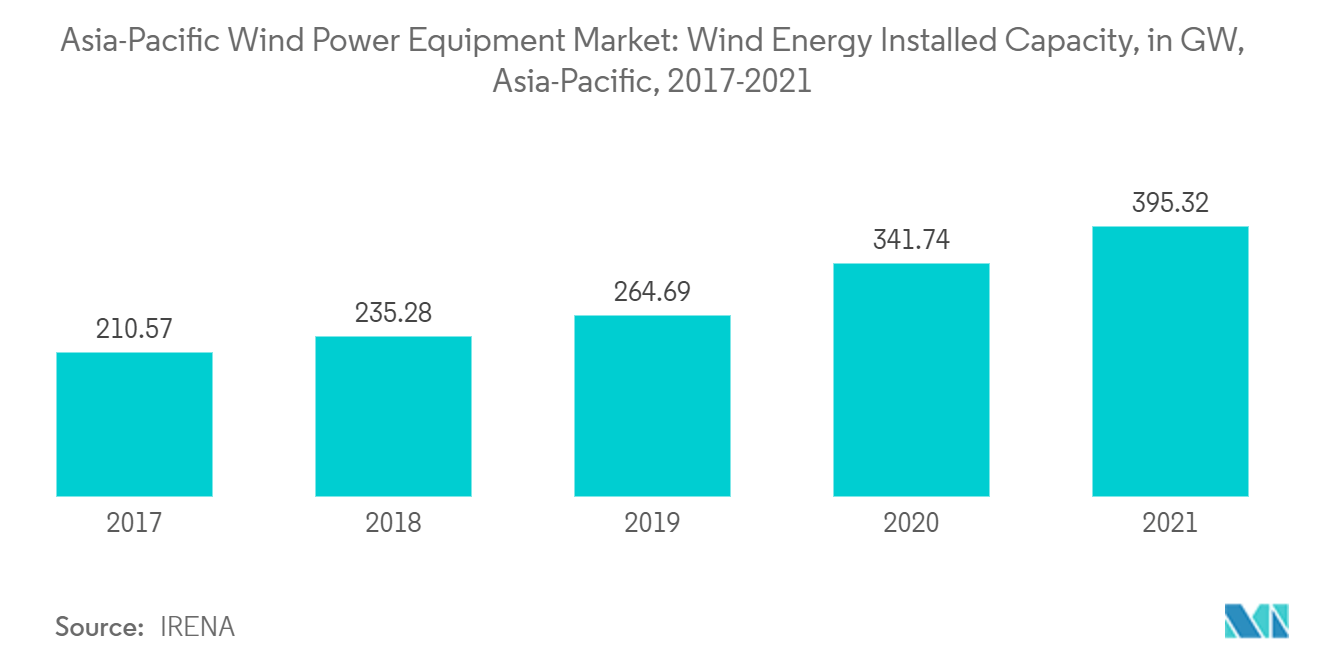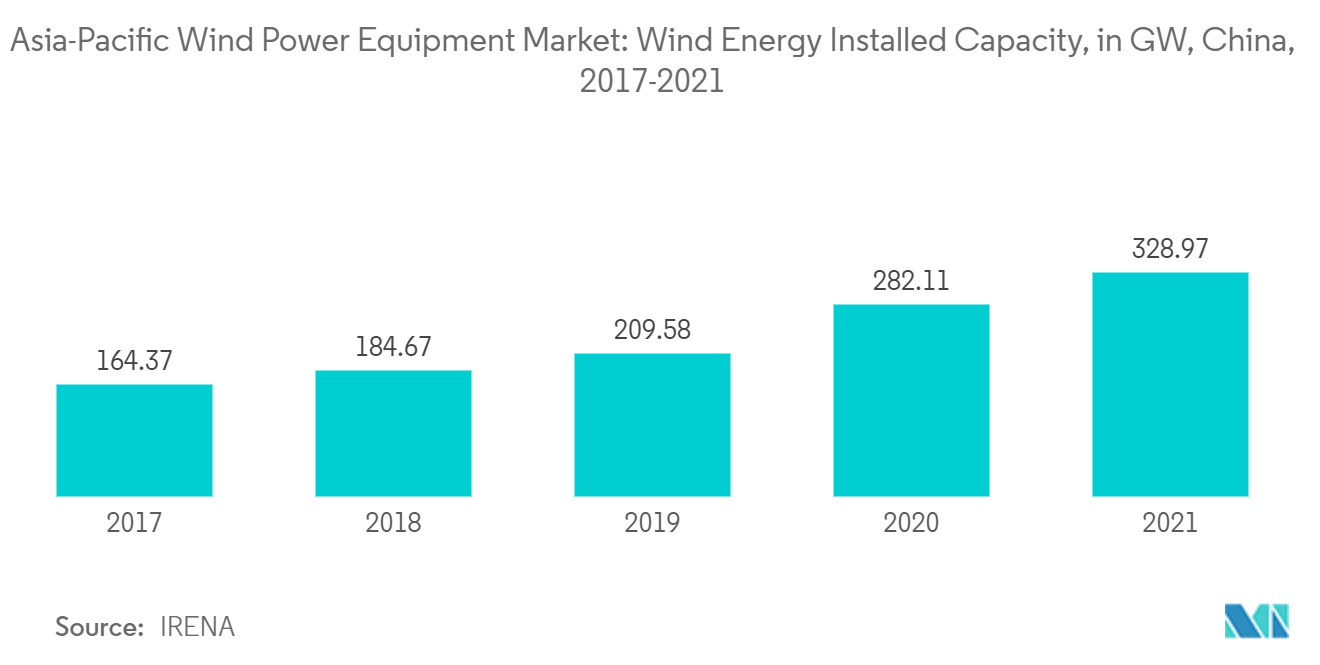Market Trends of Asia-Pacific Wind Power Equipment Industry
This section covers the major market trends shaping the APAC Wind Power Equipment Market according to our research experts:
Onshore Segment to Dominate the Market
- Onshore wind power is made by turbines that are on land and get their power from the wind. The Asia-Pacific region is overwhelmingly constituted of onshore wind farms due to its cheaper cost, sparse land, and high-speed winds that can be found in areas such as southern India.
- By changing the way wind turbines are built, new types of onshore turbines are being put on the market to make wind energy more efficient. Additionally, the size and height of wind turbines have been continuously increasing, lowering installed costs and the levelized cost of electricity and driving the market's growth.
- For example, in April 2022, Vestas released the 7.2 MW V172, which at the time was the world's largest onshore wind turbine. It was made for low and medium wind speeds in a wide range of places. The blades of the turbine are all one piece and are 84 meters long. To go with the turbine, an onshore wind turbine tower with a hub height of 199 meters was launched.
- Also, the wind energy sector has been growing steadily across the region because the government has set high goals and made it easy to do business. For example, in its most recent five-year plan (which runs from 2021 to 2026), China wants to increase the amount of wind and solar power installed to 1,200 GW.India has also set a goal of putting in 500 GW of renewable energy by 2030.This is expected to give the market a big boost during the period of the forecast.
- For example, in September 2022, GE Renewable Energy signed a contract with Continuum Green Energy, an Indian renewable energy company, to supply wind turbines for the company's 218.7 MW portfolio of projects all over India.This contract calls for 81 of its 2,700-132 onshore wind turbines to be sent to projects in the states of Tamil Nadu and Madhya Pradesh and set up there.
- The Asia-Pacific region is driving the growth of the global wind industry, with the region accounting for almost 50% of global new onshore and 84% of newly installed offshore wind power capacity in 2021. Installed wind capacity increased in the Asia-Pacific region by nearly 16%, from 341.74 GW in 2020 to 395.31 GW in 2021. The installed capacity is expected to increase further in the forecast period due to further investments in the sector.
- So, the onshore wind power market is expected to grow a lot over the next few years as more money is put into the field and new technologies are developed.

China to Dominate the Market
- The installed wind energy capacity in the country increased by 16.6%, from 282,113 megawatts in 2020 to 328,973 megawatts in 2021. New wind projects are being installed in the country, which is expected to boost the wind power equipment market.
- China's offshore wind industry is mostly being built up by Chinese companies, as there aren't many foreign companies working there.Large corporations like General Electric Company and Siemens Gamesa Renewable Energy S.A. have received orders for installing the turbine. However, Chinese companies continue to dominate the market.
- According to the China Energy Portal, China's total installed wind capacity grew at a CAGR of 15.71% during 2014-2021. Within the 14th five-year plan (2021-2025), the country plans to generate 33% of its national energy consumption by 2025, with non-hydro renewables contributing 18%. By 2030, the country wishes to generate 3,300 TWh of renewable energy. As a result of significant scale investments and technological advancements, China is expected to dominate the Asia-Pacific wind power equipment market.
- Further, according to GWEC, China connected nearly 47.57 GW of new wind power capacity to the power grid in 2021. Despite the new onshore capacity additions falling due to an end to the feed-in tariff scheme for onshore wind, with onshore wind power entering an era of grid parity, new offshore wind capacity additions grew by nearly 540% year on year. Despite the fall in onshore capacity additions during 2021, GWEC forecasts Chinese onshore wind additions to continue increasing during the forecast period.
- In its 14th five-year plan passed in 2021, China introduced the concept of "clean energy bases." These are large areas designated for the simultaneous construction of several GW-scale wind and solar parks connected to demand centers via high-capacity long-distance transmission lines.
- Most of these clean energy bases are concentrated in the sparsely populated western provinces. China has nearly 2.6 million square kilometers of desertified land, which accounts for approximately 25% of its landmass. It also has massive tracts of land turned into wasteland due to coal mining and other industrial activities. The Chinese government aims to establish massive clean energy bases in these low-population-density regions to power the densely populated eastern coastal areas.
- Large-scale goals and deployments for renewable energy are likely to be a big driver of the China wind equipment market over the next few years.


